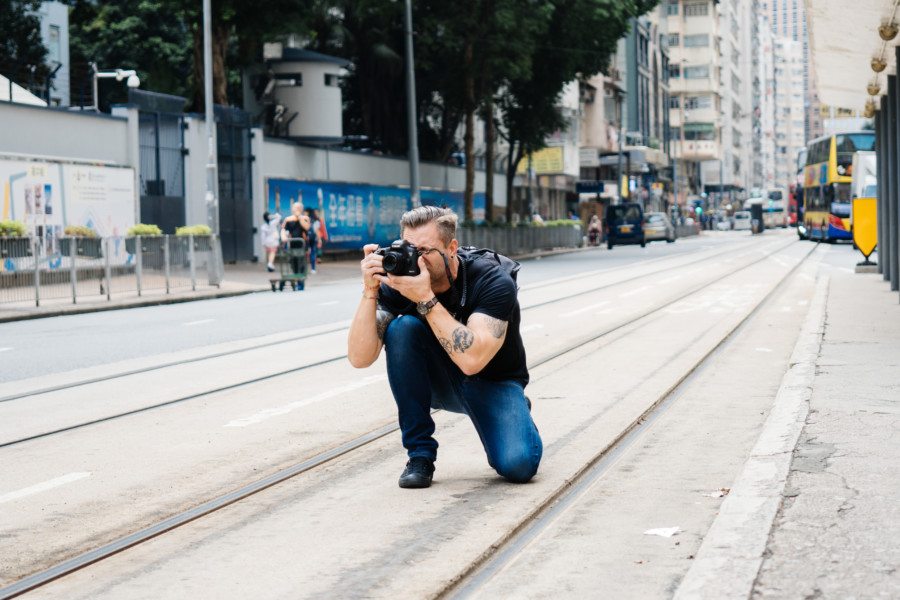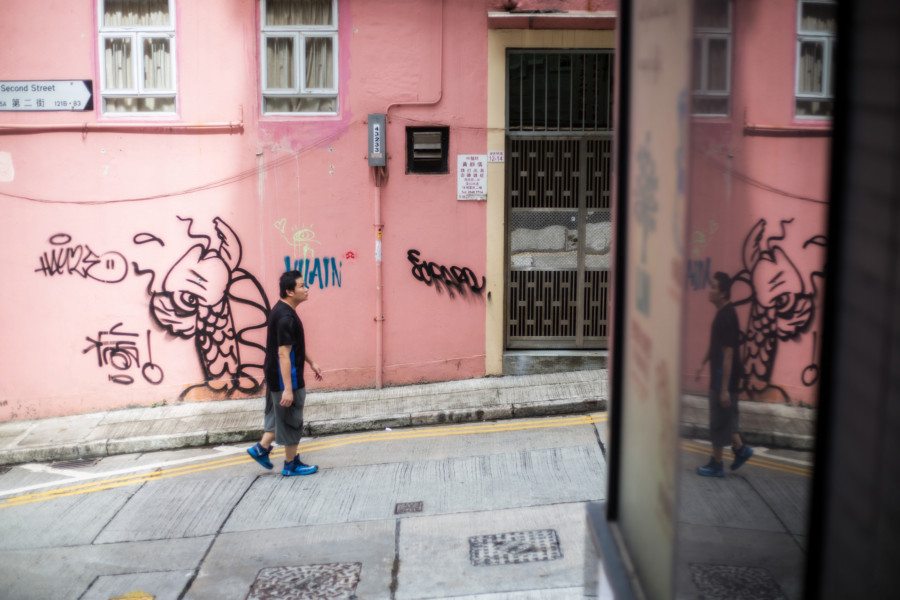
We talk being creative in Hong Kong, the beauty of imperfections, and whether or not you should ethically be sharing other people's work on Instagram with street photographer Michael Kistler.
Hong Kong has a buzzing creative scene if you know where to look. From great underground live music venues to arthouse movie theatres and the best Hong Kong bookstores, the diverse mix of cultures here in the city mean that there’s always something for everyone. Originally from Minneapolis in the United States, Michael Kistler moved from banking to teaching before making the jump to becoming a street photographer. We sat down with the Hong Kong-based artist to find out more about life as a creative in the 852.
An interview with Michael Kistler
Hi, Michael. Great to sit down with you. Tell us how you got into photography.
I had been shooting fairly consistently from the end of high school; a bunch of analog stuff. I got a Ricoh from my parents when I graduated high school, and took that on my first trip to Europe. They were horrible photos, but it was a new world, new environment, new people, new culture – all of it. It was the travel that sparked off my interest in photography, and I began to see things that I hadn’t seen before.
You were in Japan before coming to Hong Kong. Had you gone there as a photographer?
Not at all. I went to Japan just on a lark. I was teaching there, as it was one of the only things you could do there at the time without a lot of experience. That was kind of during the English teaching boom; I was in Tokyo and I loved it.
I returned to the US and got my M.A. before going back to Japan to properly teach at universities. After a few years though, I became somewhat disillusioned with the system there, and I found myself doing more and more photography, thanks to the long holidays that came with the job – until it became time to make the leap into photography full-time.
How did you end up in Hong Kong then?
When I decided to make the transition to being a full-time photographer, my wife and I decided to come to Hong Kong, as she was offered a job here. We’d been talking about moving for a while, and Hong Kong was not on our radar at all, even though I’d been a few times to visit. So it just came up and we made a pretty quick decision to do it.
Is there a photography scene in Hong Kong and, if so, what was it like to break into that scene?

I think there’s a scene. Even though, some days, I feel as though I’m still trying to break into it. It can be hard because sometimes you wake up feeling really good about what you’re doing, yet other days you wake up feeling the exact opposite.
When I came here, I guess I thought I would be working more on the fine art side, and I do actively do that. But what I’ve realised is that to make a living doing that is next to impossible. I’ve been doing a lot more teaching and workshops than I thought I would, but it doesn’t surprise me in terms of where photography is going in terms of mobile and everybody running around snapping away. For me, the teaching part dovetails really nicely with my background, and I have a captive audience; people on the courses really want to be there, you know.
Which photographers or street photographers do you love?
I’m more influenced by older photographers than contemporary ones. Daido Moriyama, for example, works exclusively in black and white, and he influenced me a lot when I was shooting in Tokyo. You can see that in the work I was doing during those Tokyo years.
Another would be an American photographer called Saul Leiter who worked primarily in colour. He did a lot of stuff with abstraction, shooting through wet windows, unconventional angles, odd points of view, and just kind of messy stuff, but really, really beautiful.
I’m really drawn to the imperfect.
Let’s talk more about imperfections, especially in regards to social media where you are very active.
Yeah, well it’s what we’re seeing in places like Instagram, where everybody is talking about ‘clean’ photography. Straight lines, perfect placement, those cookie cutter carbon copy images, and I think that’s really boring.
It’s influenced me though. It’s made me want to mess things up. I love the buildings and the colours and the façades and the crazy height of everything here, but how many times have we seen that image? It is striking, but when people are copying people who are copying who are copying people, and you keep seeing it on Instagram, it just becomes a little too generic.
On the subject of Instagram, what are your thoughts on people sharing your works? Are you ok with that?
I’m pretty protective of my work, as I feel like I should be, and every artist should be. I put a lot of time and energy and effort into it, so I think that if people are sharing your images, and either crediting it or not crediting it, well, I feel that we will be fighting that for a very long time. There seems to be this general sentiment out there – especially with the internet – that everything out there is up for grabs, and that’s what scares me because we should know that isn’t true.
Honestly, it’s on a case-by-case basis. But people should know that this is how I make a living and talk to me about using my images.
Do you listen to music when you are shooting?
That’s a good question. I’m usually listening when I’m walking, but then if I start shooting, I’ll pull my music out, and I guess it’s a distraction. Although, I’m not quite sure why because I know a lot of people who listen actively and shoot. Maybe it just speaks to my inability to manage two things at one time… I don’t know…
But, in Hong Kong, I nearly get hit by something daily: minibus, truck mirrors, trams, so for me having another distraction is probably not super wise.
What have you been working on?

Last year, I collaborated with Makha along with a friend Tricia, which was going to focus on micro sections of graffiti walls. It was a fashion collab where some of it translated into clothing, so it was fun. I also completed a series of mostly double exposure images, which is something I had been working on a lot in 2019.
We know that you’ve been involved with some charity work too. Who have you been working with, and in what ways?
So, Teen’s Key is a really small NGO. They provide services, counselling, and support for young women who’ve had some kind of trouble in their lives and are in need of help which they couldn’t otherwise get.
Bowie Lam, the founder, has been doing great things with this organisation. So we worked together to shoot some of the girls and young women, and the idea was to shoot them in a way in which their identities wouldn’t be given away – for obvious reasons – which became interesting, because how do you shoot people in an interesting way without showing faces?
So the images were auctioned off, and all of the money raised went into supporting Teen’s Key for an entire year, which was really great.
And what would you say to people who want to become street photographers (or any kind of photographers?)

You’ve got to just get out there and shoot. Don’t be afraid to lie down on the street and experiment. People will look at you funny, but who cares?!
Once offering courses known as the Hong Kong Photography Workshop, Michael set up Click852 with photographer Dan Cotton in May 2021. The two now provide a photography studio and a series of photography workshops.
Find out more about Michael Kistler at Michael Kistler Photography.

